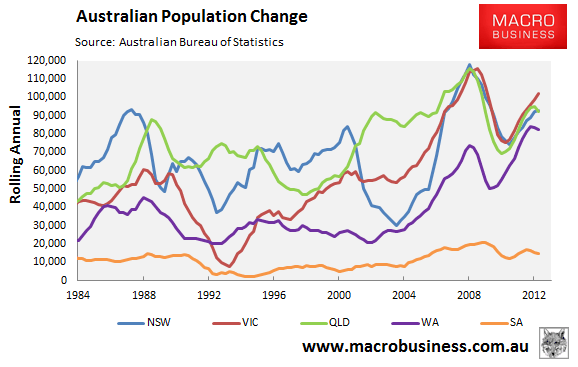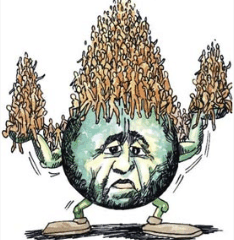
The Australian Bureau of Statistics (ABS) has released the Australian Demographic Statistics for the March quarter of 2013.
According to the ABS, Australia’s population grew by 1.8% in the year to March 2013, slightly below the rate recorded in the year to December 2012, but well above the 30-year average of 1.4%.
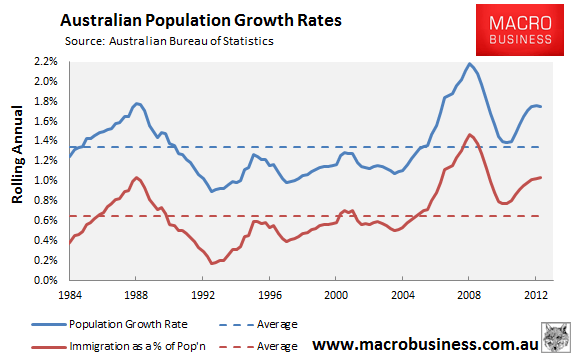
The growth in the number of persons in the year to March 2013 was 397,300, which was 144,003 above the 30-year average:
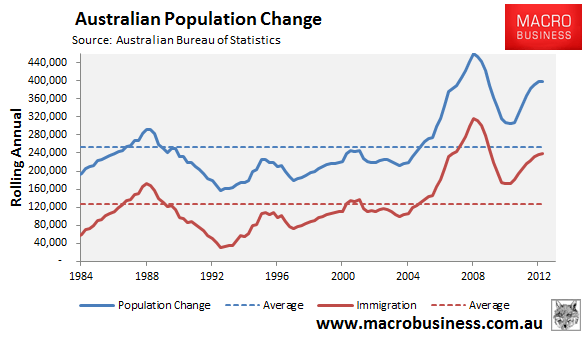
Australia’s population growth continues to be driven by net overseas migration (NOM) – defined as those residing in Australia for 12 months or more (see next chart).
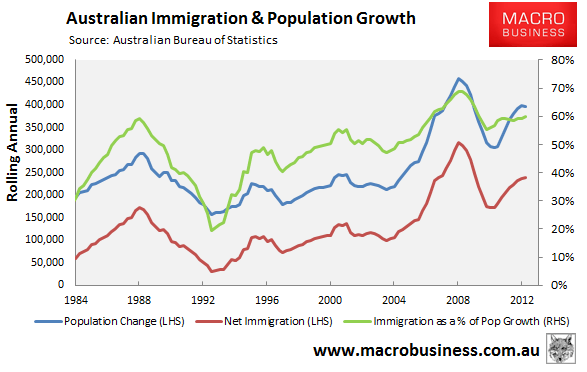
While NOM has declined from a peak of 315,700 in calendar year 2008 to 238,300 in the year to March 2013 – it remains well above the average level of 127,547.
Moreover, as shown above, the proportion of population growth derived from NOM – 60% in the year to March 2013 – remains well above the 30-year average of 48%.
Separate data compiled by the ABS, which measures permanent arrivals/departures into Australia only, suggests that nearly two-thirds of NOM is temporary, although some proportion of these arrivals do become permanent residents at a later date.
As shown in the next chart, the number of net permanent arrivals into Australia was 60,190 in the 12 months to July 2013, which is tracking just below the 30-year average of 66,333 (see next chart).
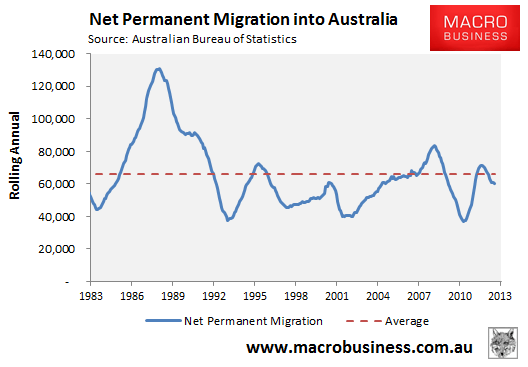
While natural increase – the difference between births and deaths – is not the key driver of Australia’s population growth, it too is running at levels well above the 30-year average (see next chart).
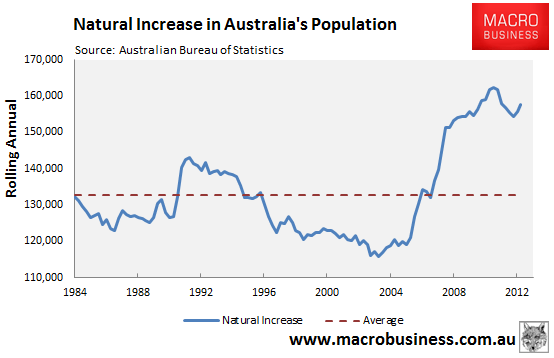
Australia’s population growth rate continues to be driven by migration into Australia’s key resources state – Western Australia – where population grew at a rate (3.4%) that was nearly double the national average (1.8%) in the 12 months to March 2013:
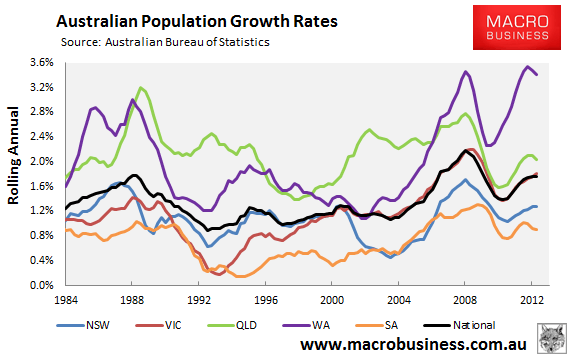
In number terms, however, population growth in the 12 months to March 2013 was highest in Victoria (101,917), followed by New South Wales (92,827), Queensland (92,321), and Western Australia (82,558):
